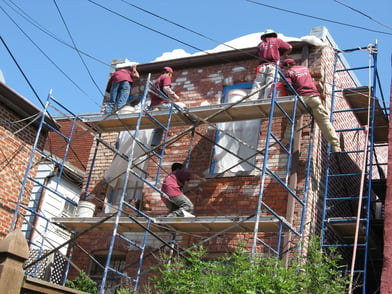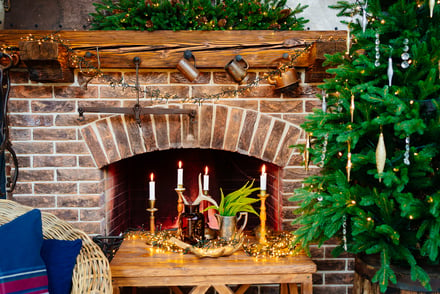Are you thinking about painting the brick in or on your historic DC home? Be it one interior wall, or the entire exterior of your home, this is a decision that should be carefully weighed. Keep in mind that once brick is painted, you'll be committed to either a cycle of repainting every three to five years or having to remove the paint. If you are seriously considering whether to paint old brick, here's what you need to know.
As you stroll through the neighborhoods of brick rowhouses in Washington DC, you'll notice how the natural brick facades blend in beautifully with the more colorful painted brick houses – many of which display historically authentic colors. If you know the year your home was built, you will want to think about researching paint colors from that period. However, there's a list of other important considerations you should check on, way before choosing the color.
The Current Condition of Your Bricks
Whether interior or exterior, if your brick is already in bad condition - chipping, deteriorating, molding – it is never a good candidate for paint. Existing problems in the façade can be exaggerated when paint blocks the natural pores in the brick’s surface. Water that seeps in through the mortar cannot evaporate through the surface of the bricks, and this is what often causes paint to chip. So, although painting old brick may seem like a good idea aesthetically, it is not always the best thing structurally.
If you see crumbling mortar joints or cracks in the brick, consult with a masonry contractor who specializes in residential exterior tuckpointing to assess the extent of the damage; it's quite likely that the expert will recommend that you shouldn't paint the brick until after tuckpointing is complete and any necessary repairs have been done.
Preparing Bricks for Painting
You can avoid most complications by spending the necessary time to fully prepare the brick facades. First and foremost, you must clean the brick thoroughly of any dust, mold, and dirt that has accumulated over the years, preferably with simple soap and water, since acidic solutions can result in paint chipping. (Remember: never use a power washer, as this can be harmful and do damage to your old brick.) After the brick is cleaned to your satisfaction, be patient and wait for it to dry completely, for at least 24 hours. As a practical reminder, don't forget to put down drop cloths.
If you happen to notice a white residue on your bricks, it's efflorescence, caused by water-soluble salt deposits which are quite common on older brick walls. This particular residue should be removed with water and a stiff brush. Before you start painting, wait to see if the efflorescence returns, and if it does, contact a professional to determine the exact nature of the problem.Subsequent to the cleaning, the next step is to apply latex primer and let that completely dry as well, before applying your choice of paint. (Waterproof paints are highly recommended.)
How Do I Know What Paint is Best for Brick?
The Brick Industry Association advises using a porous paint for brick walls so that the brick can breathe. Paint products that pertain specifically to masonry - conditioner, primer, and exterior latex paint - are available for painting exterior brick. If you ultimately decide not to paint, you may consider an alternative such as brick stain, which has the ability to penetrate the brick, providing the color you desire without some of the long-term issues that come along when you paint.
Renaissance Development, a leader in brick restoration and historic preservation, specializes in the repair and restoration of historic DC brick buildings. We love old homes and are committed to preserving their historic charm and value. If your renovation plan includes masonry or brick repair, contact us for a free site visit and project quote.
Tags:
Historic Preservation, Curb appeal, Interior brick walls, Exterior brick, old brick, Painting Old Brick, Paint Old Brick1/5/23 8:15 AM

